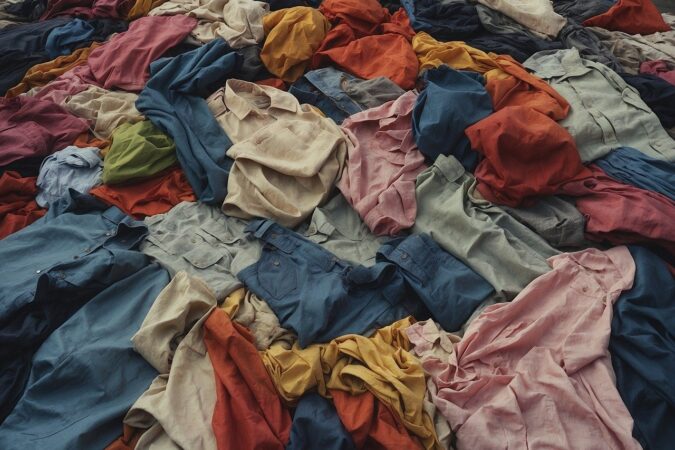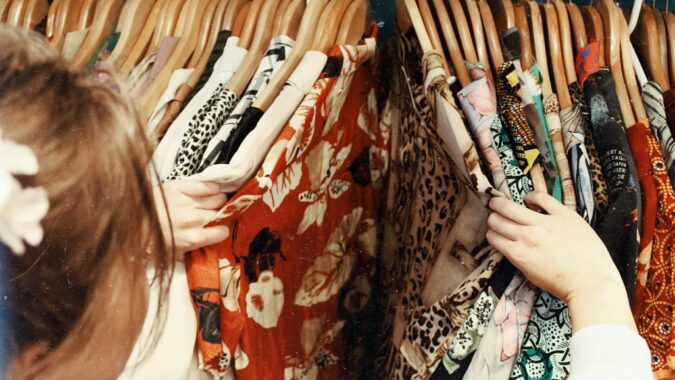
How to Reduce Clothing Waste
Everyone throws away old clothes eventually. Socks become too holey to repair, woolly jumpers bobble beyond belief, and that stain just won’t come out of your favourite dress. But fast fashion has also led to the volume of clothing items we throw away doubling over the last 20 years.
It’s not just consumers creating clothing waste. Fashion brands generate textile waste through manufacturing processes, companies need to dispose of corporate workwear and old uniforms, while most clothes shops end up with unsold stock at some point. Reducing textile waste by businesses and consumers is essential to benefit the environment.
Old clothes aren’t always easy to recycle depending on their materials or possible to reuse if in poor condition. Cutting down on textile waste in the first place is best. Find out how to reduce clothing waste as a business or consumer with these trendy tips.
Get a free quote
Get a fast FREE quote for waste collection
- Free quote within 1 hr
- Any type of textile waste
- FREE bins and delivery
- We cover all of the UK
Why is it important to
reduce clothing waste?
Producing new clothes requires lots of energy and resources – including an incredible amount of water. Production practices by the fashion industry are responsible for around 10% of humanity’s carbon emissions. Reducing clothing waste through reuse, recovery, and recycling minimises the need to create new items and its negative environmental impact.
When clothes end up in landfill they can take more than 20 years to decompose. As textiles break down it also creates the greenhouse gas methane that’s a major contributor to global warming. Toxic chemicals and dyes from the clothing can also leach into the ground and nearby water, adding to pollution levels.
However, recycling clothes can be challenging as they’re made from a wide range of materials. The processes vary in scale, cost, and feasibility. Many individual items contain a combination of materials that are difficult to separate for recycling and reuse. Reducing clothing waste is therefore preferable where possible.
Cutting back on clothes waste also reduces the energy and resources required for recycling textiles. It minimises the carbon footprint involved in transporting old clothes to recycling facilities too. There’s much less risk of any clothes and other textiles making their way to landfill if less waste is produced in the first place as well.

How much clothing waste
do we produce?
Every second a truckload of textile waste is incinerated or disposed of in landfill around the world. This includes bedding, curtains, and other textiles but clothing makes up a big proportion of it. The UN Environment Programme estimates that today people buy 60% more clothes and wear them for half as long.
Fast fashion and the desire to buy more new clothes more often are leading to higher volumes of textile waste across the planet. It’s estimated that the world creates a staggering 92 million tonnes of textile waste annually. That’s not cool and shows the need to reduce clothing waste where possible. Check out our page that covers a wide range of fashion waste facts and stats.
How to reduce waste
in the fashion industry
The global fashion industry produces up to 100 billion items of clothing every year. Designs, manufacturing processes, and packaging create mountains of waste. This has a terrible environmental impact and as consumers become more eco-conscious it also reflects poorly on many brands. Reducing fashion waste is a priority for all businesses in the sector.
Here are a few ways to reduce waste in the fashion industry:
- Use sustainable materials – it’s estimated that 60% of all materials the fashion industry uses are made from plastic, which is tricky to recycle. Synthetic fibres and non-recyclable materials are cheap and quick to use but they’re not sustainable. Moving towards biodegradable materials such as hemp, lyocell, and spinnova helps reduce waste at the end of an item of clothing’s life.
- Require recyclable packaging – plastic packaging is everywhere in the fashion world, from coat hangers to thin plastic bags and wraps to protect shirts, dresses, and suits. Switching to paper, cardboard, and easily recyclable alternatives (or zero packaging at all) reduces how much plastic waste the fashion industry produces.
- Improve inventory management – overproduction of fabrics and clothing items is a big source of waste in the fashion industry. Assessing demand through smart trend prediction tools and optimising inventory management with software can prevent overstocking materials and producing too much, which in turn creates less waste.
- Provide refurbishing services – repairing and refurbishing clothes cuts back on waste and is a great way for fashion houses to upcycle items. Taking back unwanted items and refurbishing them for resale makes environmental and financial sense. It ties into the growing trend of renting clothes too, as once items have been hired a few times they can be refurbished and freshened up.
- Save water with new processes – waste water is a big concern for the fashion industry. One way to save tonnes of water is through the biological process of Moving Bed Bioreactor (MBBR). The dye removal process is faster and requires less effort than coagulation or absorption, which saves energy and tonnes of water.
How to reduce textile
waste at home
Consumers and households are responsible for hundreds of thousands of tonnes of textiles going to landfill in the UK every year. This uses valuable space, contributes to the production of methane in landfill, and adds to pollution levels as chemicals from clothing leach into the ground, air, and water nearby. Most textile waste can be recycled, reused, and recovered.
These are a few ideas to reduce clothing and textile waste as a consumer:
- Only buy what you need – simply buying fewer clothes saves on the energy, resources, and materials needed to make new ones. Only purchase a new item when you need it rather than when you fancy a shopping trip or get the itch for something fresh. Fast fashion and increased consumerism lead to more textile waste.
- Repair and repurpose clothes – got a hole in your sock? Try sewing it back together. A rip in your jumper’s elbow? Stitch on a patch and add a bit of character. Repairing clothes reduces waste, saves money, and makes use of other bits of old fabric. You could even combine two old items and repurpose them into one, like taking the best bits of two torn t-shirts and redesigning them for a fresh look.
- Go for quality over quantity – fast fashion focuses on short-term trends and items designed to be worn for a few months. Avoid this and go for good quality clothing that will last for years and that you’ll wear regularly. Some good quality clothing may cost more initially but over time it’ll work out cost-effectively as you have to buy fewer items.
- Donate old clothing – an easy way to avoid disposing of old clothes and textiles that might end up in landfill or incineration is to give them away. If they’re still in decent condition then offer them to charity shops, friends and family, or even online. Clothes and textiles that are ripped, stained, or beyond use can be put in clothes banks or donated to farms, vets, and animal shelters that can use them for bedding and cleaning purposes.
- Buy second-hand – save other people’s clothes from going to waste by picking up something second-hand. There are now more options beyond just charity shops with sites like Vinted selling a wide range of used (and even unused) clothes at cheaper prices too.
- Rent clothes – how many times a year do you wear a fancy suit or glamorous dress? If you only need something for a couple of occasions then consider renting rather than buying. This way you avoid sticking something in your wardrobe or throwing it away after a few uses, save money, and can access some high-end items.

Read more waste reduction guides
Sorted out your wardrobe and cut back on clothing waste? Discover more ways to reduce rubbish in your business or home with our other guides.
Get a fast and free quote
Get a fast FREE quote for your waste collection
- Free quote within 1 hr
- Any type of textile waste
- FREE bins and delivery
- We cover all of the UK